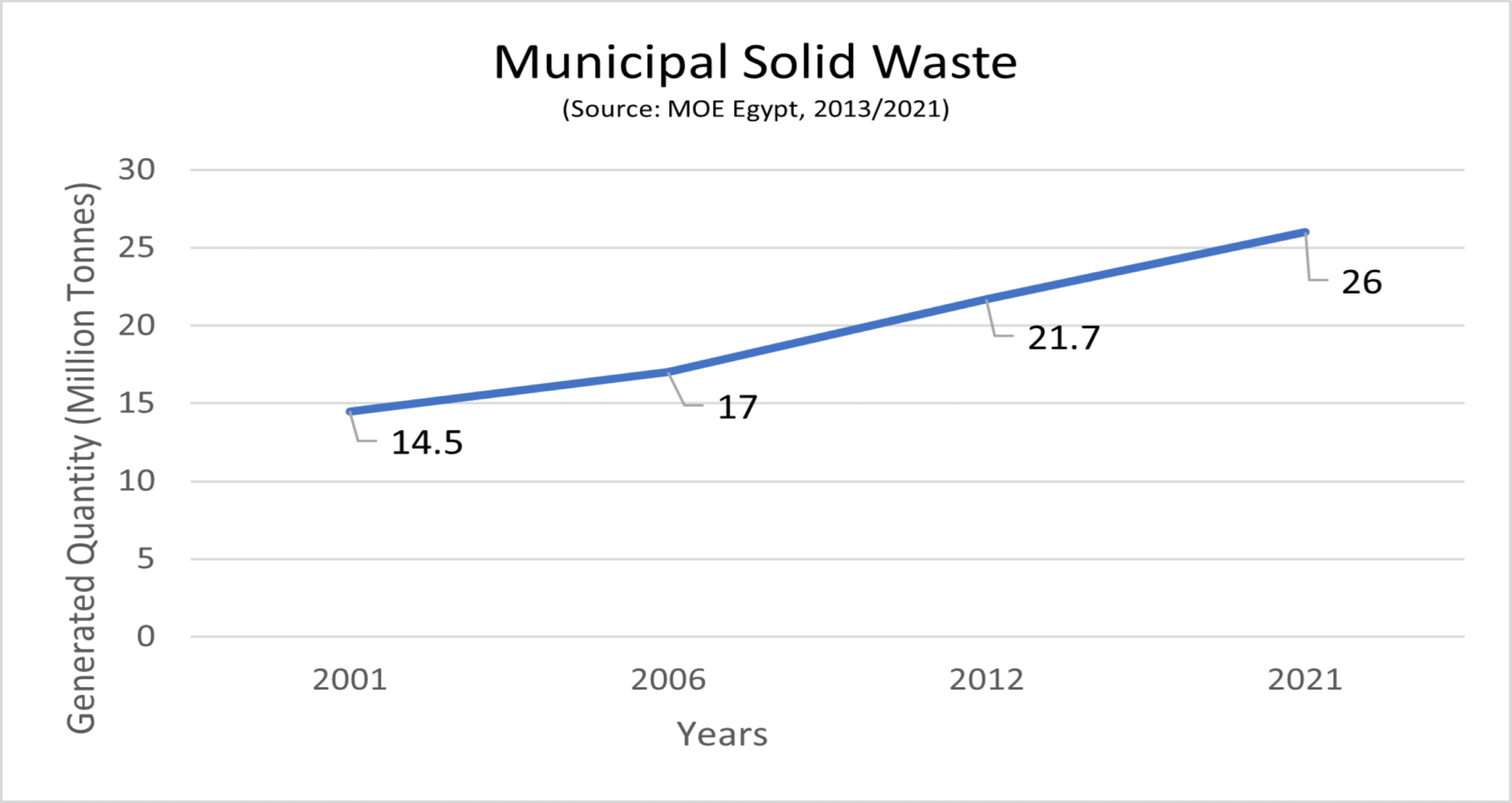Increasing waste challenge
Egypt is the most populous country in the Middle East, with a population of nearly 105 million (2021). Egypt generates around 26 million tons of MSW annually, which is expected to increase by 3.4% per year due to population growth and changing consumption patterns. The MSW collection systems capture less than 25% of the waste in rural areas and between 30-85% of the waste generated in urban areas. In Cairo, the collection rate is around 65%. The remaining waste accumulates in and around residential and commercial areas and is often discarded into rivers and canals, attracting vectors, creating odours, and diminishing local quality of life.


Emissions due to (unofficial) disposal

The waste in developing/ lower-middle income countries mainly consists of degradable materials (>50%), which play a significant role in GHG (Greenhouse gas) emissions in urban localities. The increasing MSW generation, along with the high fraction of organic waste and its unscientific/ unofficial and safe disposal, is leading to the emission of GHG in the atmosphere.
Most landfill emissions, approximately 99%, consisting of carbon dioxide (CO2) and methane (CH4). The other 1% may include hydrogen sulfide (H2S) along with a list of non-methane organic compounds (NMOCs), inorganics, and occasionally metals.
CO2 is perhaps the most frequently cited GHG, and other GHGs are often expressed in terms of their CO2 equivalent. For example, methane is also a GHG and has approximately 30 times more impact than carbon dioxide. Consequently, methane is the primary focus of controlling landfill emissions.
Waste accounts for 3.2% of global emissions (wastewater 1.3% & landfills 1.9%). WTE is a hygienic method of treating waste, reducing its volume by about 90%. Of the remaining 10%, a part can be used in further applications like the cement or asphalt industry; the other half will be safely disposed of in a secured landfill site.
Egypt's Global Waste Initiative 50 by 2050 - Waste to Energy
The Global Waste Initiative aims to treat and recycle at least 50% of the waste produced in Africa by 2050. By achieving this target, Africa would contribute to increasing the global waste treatment rate by +10% and reducing the overall effects of waste pollution on human health, biodiversity, food systems, and resource scarcity.
Green Tech Egypt and Renergy Group Partners are pleased to contribute to this great and important initiative to increase the treated waste in Egypt and Africa. WTE is widely acknowledged as a technology that can help mitigate climate change. This is because the waste combusted at a WTE facility doesn’t generate methane as it would at a landfill; the metals that would have been sent to the landfill are recovered for recycling instead of being thrown out, and the electricity generated offsets the greenhouse gases that would otherwise have been generated from coal and natural gas plants. Especially with the development of three WTE facilities by GTE/ Renergy Group Partners, where a patent flue gas treatment system will be added as a unit to have minimal air emissions.
